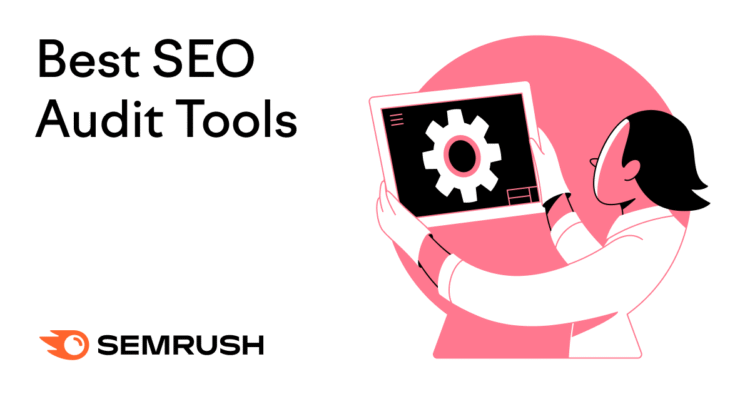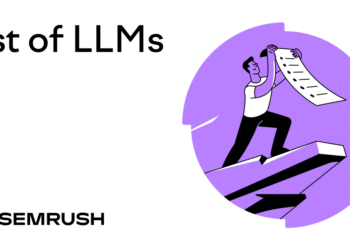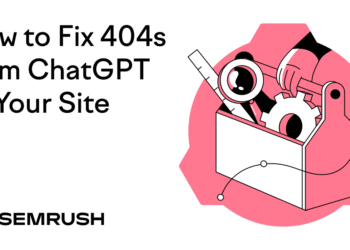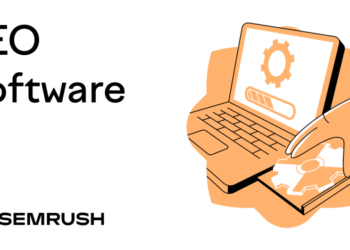SEO audit tools spot problems you can fix to improve your performance in search engines and AI platforms.
By the end of this guide, you’ll know which of the 10 best SEO audit tools I tested is right for you based on features, prices, and my experiences using them.
Top 10 SEO Audit Tools
Here’s a snapshot of the best SEO audit tools, which I tested using one commercial HVAC company’s domain whenever possible:
|
SEO Audit Tools |
Best for |
Pricing |
|
Site Audit |
Comprehensive audits with prioritized fixes |
Free for up to 100 pages. Paid plans start at $139.95/month. |
|
On Page SEO Checker |
Finding specific, page-level optimization recommendations |
Free for up to 10 pages. Paid plans start at $139.95/month |
|
Google Search Console |
Understanding exactly how Google sees your site |
Free |
|
Screaming Frog SEO Spider |
Auditing for large websites |
Free for up to 500 URLs. Paid version is $279/year. |
|
SE Ranking |
Tracking ongoing site health with clear, point-based scoring for each fix |
14-day free trial. Paid plans start at $65/month. |
|
Morningscore |
Beginners who want a gamified, beginner-friendly way to approach technical SEO fixes |
14-day free trial. Paid plans start at $49/month. |
|
SEO Pro Extension |
Quick, page-specific audits |
Free |
|
Netpeak Spider |
Running in-depth desktop crawls with detailed control over every SEO check |
Three-day free trial. Paid version is $20/month. |
|
Conductor Monitoring |
24/7 monitoring with instant alerts when issues appear |
Seven-day free trial. Paid plans have custom pricing. |
|
Sitebulb |
Team collaboration with shared audit notes |
14-day free trial. Paid plans start at $18/month. |
Now, let’s take a look at each paid and free SEO audit tool in detail.
1. Site Audit
Semrush’s Site Audit tool crawls your website to find technical SEO issues, prioritizes those issues, and provides actionable fixes.
I set up the project using the default crawl settings and scheduled weekly audits to keep tracking site health over time.

Site Audit scanned 100 pages and finished in about three minutes.
The “Overview” report provides a quick snapshot of your site’s overall health across both traditional and AI search.
It organizes issues into three categories—errors, warnings, and notices—and shows a clear Site Health score you can track over time.

The Site Performance section helped me see page speed data for all 100 pages at once. Instead of testing URLs one by one in Google’s PageSpeed Insights, I could instantly spot slower pages and prioritize fixes across the site.

I also found the “Crawled Pages” tab especially useful. The “Site Structure” view showed how easily crawlers could navigate the site’s hierarchy, making it simple to identify areas that might need stronger internal linking.

But the “Issues” tab is where I recommend you spend most of your time. It lists problems by type and shows the affected pages.
You can also filter issues specifically for “AI Search,” which highlights issues that could affect your AI search visibility. For example, it showed there are several pages that required content optimization for the website I audited.

Site Audit also allows you to:
- Export reports as PDFs
- Send issues as tasks to Trello and other task managers
- Schedule recurring audits
Pricing
You can crawl up to 100 pages per month with a free Semrush account—no credit card required. A 14-day free trial is available for those who want to explore the full feature set.
Paid plans include:
- Pro ($139.95/month)
- Guru ($249.95/month)
- Business ($499.95/month)
2. On Page SEO Checker
Semrush’s On Page SEO Checker analyzes your pages against your SEO competitors and provides optimization ideas to boost visibility.
I used the auto-import option, which pulled 50 pages from my site that were already ranking but just outside the top 10.
You can also add URLs manually if you want to focus on key pages like blog posts or service pages that drive conversions.

The tool took around three minutes to analyze everything and surfaced 92 actionable ideas across strategy, content, backlinks, semantics, and SERP features.

What stands out most is how it prioritizes each page based on potential traffic gain and impact. That saves me from guessing about where to start.

I also like that I can drill down into a single area. For example, the “Semantic” section suggests related phrases that my competitors are using. Adding those phrases could improve topical depth and visibility in both traditional and AI search.

And I like that the “Top 10 Benchmarking” tab shows how my pages compare to the current top results for things like content length, backlinks, and readability. And gives me quick clues about what competitors are doing better.

Pricing
The free Semrush plan covers one campaign with up to 10 keyword-page pairs—no credit card required.
Paid plans include:
- Pro ($139.95/month)
- Guru ($249.95/month)
- Business ($499.95/month)
3. Google Search Console
Google Search Console (GSC) helps you understand how Google views and indexes your website, so you can track performance, identify crawlability issues, and spot pages that need attention.
To use it, you first need to verify site ownership. It might take a few days after verification before you’ll start seeing data.
Since I couldn’t verify my example site for this review, I’m basing this section on how I regularly use GSC for projects.
One feature I use most often is URL inspection. It quickly shows whether a page is indexed, when it was last crawled, and if a noindex directive is keeping it out of search results. That’s usually where I start when a key page suddenly sees a performance dip.

The “Page indexing” report is another go-to for me. It breaks down all your URLs by indexing status and shows reasons why some pages might not appear in search.
For example, I often find “Crawled – currently not indexed” URLs in the “Page indexing” report. And that helps me prioritize pages that need swift attention.

To troubleshoot site performance, I use the “Core Web Vitals” reports (there’s one for desktop and one for mobile). It groups pages by how strong their metrics like Largest Contentful Paint (LCP) and Cumulative Layout Shift (CLS) are.
In some cases, the “Core Web Vitals” reports make it easy to spot patterns—like all product pages having an unusually high LCP.

Further reading: 15 Crawlability Problems & How to Fix Them
Pricing
Google Search Console is free.
4. Screaming Frog SEO Spider
Screaming Frog SEO Spider is a desktop crawler that finds technical SEO issues and provides detailed reports. And it’s an ideal tool for those with deep technical expertise.
I downloaded the free version of Screaming Frog SEO Spider and crawled 500 URLs (the free limit) on the test site. For me, this took four minutes.
What stands out most about Screaming Frog is how much insight it packs into a single view. The main dashboard lists every URL alongside information about status code, content type, meta description, etc. So, it’s easy to spot certain issues right away.

The “Issues” tab lists problems in order of severity. That’s where I spent most of my time during the audit, since it helped me decide which fixes to tackle first.
The Screaming Frog crawl flagged missing canonicals (HTML elements that indicate the main version of a page), duplicate H1s, and placeholder text that needed updating.

I also like the “Inlinks” and “Outlinks” panels, which show every link to and from a selected page along with anchor text, follow status (which indicates how valuable a link may be), and link position.
Pricing
The free version crawls up to 500 URLs and includes most core audit functions.
The paid plan is $279/year and removes crawl limits and adds advanced features like saving and comparing crawls, integrations with tools like Google Analytics, and scheduled crawls.
5. SE Ranking
SE Ranking’s Website Audit crawls your site to detect technical SEO issues and provides a health score with category-based recommendations for improvement.
I used the 14-day free trial to test Website Audit, and the tool scanned more than 200 pages in under a minute. It gave my site a score of 85, with close to 1,000 issues detected.

What I like about SE Ranking is how it quantifies progress. Each issue type contributes to your total Health Score, so you can instantly see how much your score will improve once a fix is applied. This makes it easy to prioritize changes that deliver the biggest payoff first.
For example, in my test using Website Audit, fixing all meta tag issues would have raised my score by six points.

The “Crawl Comparison” feature was another highlight for me. It lets you compare results from two different audits to confirm whether recent updates improved your score or created new issues. This is particularly useful for when you’re doing site maintenance.

SE Ranking also includes other features common in paid SEO audit tools, such as the ability to set crawl limits, scan specific pages, and review internal linking.
Pricing
SE Ranking is available through a free 14-day trial with no credit card required.
Paid plans include:
- Essential ($65/month)
- Pro ($119/month)
- Business ($259/month)
6. Morningscore
Morningscore crawls your site and gamifies the SEO audit process by turning your results into guided “missions” you can complete step by step.
I started a 14-day free trial of Morningscore and ran a crawl on my test site. It took about a minute and categorized issues into three main tabs.

The “missions” system is where Morningscore really stands out. Essentially, the tool sets goal-based tasks (like improving a target keyword’s ranking to a certain position) to turn your audit results into smaller, more actionable steps.
And you can set up your own custom missions based on your audit results to focus on the specific pages or metrics you care about.

Morningscore also includes a “Condition” meter that shows how severe an issue is and how much it affects your overall score. I like that visual clarity for focusing on what matters most.
And for some fixes, Morningscore includes a “Fix with AI” option. In the image below, this feature allows you to generate a better meta description.

Pricing
Morningscore offers a free 14-day trial—no credit card required.
Paid plans include:
- Lite ($49/month)
- Business ($69/month)
- Pro ($129/month)
- Premium ($259/month)
7. SEO Pro Extension
SEO Pro Extension is a free Chrome and Firefox extension that displays on-page SEO data when you activate it on any webpage.
I installed the Chrome version and tested it on several pages. It worked instantly—no login or setup required. And it organized data neatly into multiple tabs.
The “Overview” tab displays basic details about the title tag, meta description, canonical URL, and word count.
What I liked most is that SEO Pro Extension shows Core Web Vitals data pulled from Google’s Chrome User Experience Report (CrUX).

The “Links” tab shows how each page connects to others across the site, which is helpful for spotting pages you should link to more frequently.

I also like the “Images” tab for seeing which images are missing alt text. While many audit tools offer this feature, it’s nice that SEO Pro Extension allows you to quickly do this for specific, high-priority pages.

Just be aware that SEO Pro Extension would require you to visit each page manually to do a complete audit, which isn’t practical for large websites.
Pricing
The SEO Pro Extension is free.
8. Netpeak Spider
Netpeak Spider is a desktop crawler that gives you full control over how your site is audited, so you can focus on the technical checks that matter most.
I downloaded Netpeak Spider and started a free three-day trial.
Unlike most SEO audit tools, Netpeak Spider doesn’t automatically begin from your homepage. You add the exact URLs you want to analyze. The flexible configuration means you can choose which checks to run, focus on specific URL groups, or skip areas that don’t need review.
And you can save the audit settings you specify in Netpeak Spider as templates, which makes follow-up audits on the same site much faster.

I chose 173 URLs from my test site’s sitemap. The scan took seconds and flagged issues across all 173 pages.

The “URL Explorer” view within Netpeak Spider listed every page along with status codes, issue counts, and response times. Which can help with quickly spotting errors. (Interestingly, all URLs in my test showed a “403 Forbidden” error.)

Pricing
Netpeak Spider offers a three-day free trial, which requires a credit card.
Paid plans include:
- Monthly ($20/month)
- Yearly ($193/year)
- Lifetime ($496)
9. Conductor Monitoring
Conductor Monitoring (formerly ContentKing) is a real-time SEO monitoring platform that keeps watch over your site for changes and new problems, so you don’t need to run manual crawls.
I used a free trial of Conductor Monitoring to process roughly 200 pages in about a minute. After that, the system monitored the site automatically in the background.

You can set up custom alerts for specific conditions like when a link breaks. And when an alert is triggered, Conductor Monitoring sends notifications via email, Slack, or Microsoft Teams. So, you can fix problems immediately.

I also like that each page gets an “Importance” score from 0 to 10 to rate authority based on factors like how many internal links point to it, how deep it sits within your site, and how often its content changes. It helps you identify the most important pages to work on first.

Pricing
Conductor Monitoring offers a free trial. I received a seven-day trial with no credit card required.
But there’s some conflicting information about the standard trial length—some resources mention longer trial periods and it’s not explicitly mentioned on the Conductor website.
Paid Conductor plans are custom-priced based on your requirements.
10. Sitebulb
Sitebulb is a website crawler (available in desktop and cloud versions) that audits sites for technical SEO issues and organizes results by severity and impact.
I downloaded the desktop version of Sitebulb and set up my first project using the default configuration. This whole setup took about five minutes, and the crawl took another two minutes.
When the results loaded, Sitebulb displayed two different scores: the “Audit Score” covers all issues, while the “SEO Score” focuses only on SEO-related factors.

Each SEO area also has its own score in Sitebulb. So, I was able to prioritize issues in areas that scored lowest.
There are also “Hints” that explain the issues and how to fix them.

I used “Audit Notes” while exploring reports to add short comments that appear directly in the Audit Overview. It’s an easy way to record what you change and when directly in Sitebulb. Or leave context for teammates working on the same project.

Pricing
Sitebulb offers a free 14-day trial for the desktop version, and no credit card is required.
Paid desktop plans include:
- Lite ($18/month)
- Pro ($42/month)
There’s also a cloud version of Sitebulb available for users who want to run audits automatically or collaborate with a team. Plans start at $125/month.
Run Your First SEO Audit Today
Doing regular SEO audits is key for seeing where you’re succeeding and where you need to improve.
The right tool for running audits depends on your needs and your budget. So consider our evaluations above to inform your choice.
Having trouble deciding?
Sign up for a free Semrush trial. It’ll give you access to Site Audit as well as numerous other tools you can use to improve your search visibility.


















